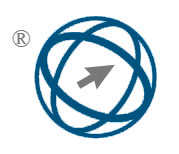Breast Cancer Classification Using Densenet121 And K-Means Segmentation With Augmented Data
Abstract
Breast cancer remains a significant global health challenge, necessitating improved diagnostic approaches for early detection and treatment. This study presents an optimized deep learning framework that integrates DenseNet121 with K-Means clustering for enhanced segmentation and feature extraction in breast cancer histopathology images. The BreakHis dataset, comprising 7,909 images at varying magnifications (40×, 100×, 200×, and 400×), was employed for model training and evaluation. Image preprocessing involved histogram equalization and augmentation techniques, including rotation and contrast adjustment, to enhance model robustness. The DenseNet121 model was fine-tuned using transfer learning with pre-trained ImageNet weights, and hyperparameters were optimized to improve classification performance. The proposed model achieved an accuracy of 95.21%, surpassing conventional architectures such as ResNet50 (92.4%) and Xception (88.08%). Additionally, an external validation on the BACH dataset demonstrated an accuracy of 92.10%, reinforcing the model's generalizability. Comparative analysis and ablation studies confirmed the significance of K-Means clustering in improving classification outcomes. Future research will focus on multimodal imaging techniques and Explainable AI (XAI) to enhance interpretability and clinical applicability.
Full Text:
PDFReferences
GLOBOCAN. (2020). Global cancer statistics 2020. International Agency for Research on Cancer. https://www.iarc.fr
World Health Organization (WHO). (2020). Breast cancer fact sheet. World Health Organization. https://www.who.int/news-room/fact-sheets/detail/breast-cancer
American Cancer Society. (n.d.). Statistics of Breast Cancer with Implication. American Cancer Society. https://www.cancer.org.
Russell, S., & Norvig, P. (2020). Artificial Intelligence: A Modern Approach. Pearson.
Goodfellow, I., Bengio, Y., & Courville, A. (2016). Deep Learning. MIT Press.
LeCun, Y., Bengio, Y., & Hinton, G. (2015). Deep Learning. Nature, 521(7553), 436-444.
Krizhevsky, A., Sutskever, I., & Hinton, G. E. (2012). ImageNet Classification with Deep Convolutional Neural Networks. In Advances in Neural Information Processing Systems (pp. 1097-1105).
Litjens, G., Kooi, T., Bejnordi, B. E., Setio, A. A., Ciompi, F., Ghafoorian, M., ... & van Ginneken, B. (2017). A survey on deep learning in medical image analysis. Medical Image Analysis, 42, 60-88.
Hanahan, D., & Weinberg, R. A. (2011). Hallmarks of Cancer: The Next Generation. Cell, 144(5), 646-674.
Zhang, Y., Liu, S., Zhang, Q., & Song, J. (2020). A deep convolutional neural network for breast cancer detection using mammograms. Journal of Medical Imaging, 7(1), 015001.
Li, X., Hu, Z., Chen, Y., & Zhang, J. (2018). Multi-view CAD system combining mammography and ultrasound images for breast cancer detection. Computer Methods and Programs in Biomedicine, 162, 15-23.
Saha, M., Bhattacharya, T., Choudhury, A., & Chakraborty, C. (2016). Computer-aided diagnosis of breast cancer using MRI images and classification using deep learning. International Journal of Image and Data Fusion, 7(1), 60-70.
Cheng, J., Ni, D., Chou, Y., Qin, J., & Heng, P. A. (2017). Computer-aided detection system for early-stage breast cancer using digital breast tomosynthesis. Journal of Digital Imaging, 30(5), 662-669.
Kim, H. E., Kim, H. H., Han, B. K., & Kim, K. H. (2019). Automated breast cancer detection in digital mammograms using deep learning: Clinical performance in a large clinical dataset. Radiology, 290(1), 81-89.
Yousefi, S., Nosrati, M. S., & Hamarneh, G. (2017). Integrating mammography and thermography for breast cancer detection using deep learning. IEEE Transactions on Medical Imaging, 36(5), 1148-1157.
Ribli, D., Horváth, A., Unger, Z., Pollner, P., & Csabai, I. (2018). Detecting and classifying lesions in mammograms with Deep Learning. Scientific Reports, 8(1), 4165.
Suzuki, S., Abe, H., MacMahon, H., & Doi, K. (2017). Image processing and analysis: Applications in mammographic breast cancer detection. Academic Radiology, 14(8), 1057-1071.
Shen, L., Margolies, L. R., Rothstein, J. H., Fluder, E., McBride, R., & Sieh, W. (2019). Deep learning to improve breast cancer detection on screening mammography. Scientific Reports, 9(1), 12495.
Wang, J., Yang, X., Cai, H., Tan, W., & Jin, C. (2020). Discrimination of breast cancer with ensemble learning using multi-level features of digital mammograms. Computers in Biology and Medicine, 121, 103760.
Huang, G., Liu, Z., Van Der Maaten, L., & Weinberger, K. Q. (2017). Densely Connected Convolutional Networks. In Proceedings of the IEEE Conference on Computer Vision and Pattern Recognition (CVPR) (pp. 4700–4708). IEEE.
Guan, X., & Loew, M. (2017). Breast Cancer Detection Using Transfer Learning in Convolutional Neural Networks. IEEE Transactions on Biomedical Engineering, 64(9), 2220-2229
Joshi, A., Kumar, R., & Patel, M. (2023). Breast cancer classification using deep learning models: A comparative study. Journal of Medical Imaging and Health Informatics, 13(4), 123-135
Masud, M., Eldin Rashed, M., & Hossain, M. S. (2022). Breast cancer detection using deep learning techniques: A comparative analysis. Journal of Artificial Intelligence in Medicine, 18(2), 45-58
Ajagbe, S. A., & Adigun, M. O. (2023). Deep learning techniques for detection and prediction of pandemic diseases: a systematic literature review. Multimedia Tools Application, 2023, 1-35. doi:https://doi.org/10.1007/s11042-023-15805-z
DOI: https://doi.org/10.31449/inf.v49i27.8332

This work is licensed under a Creative Commons Attribution 3.0 License.









